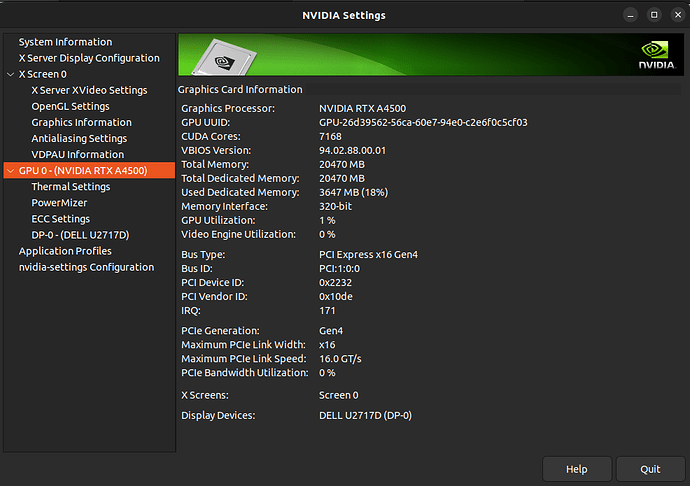I am trying to move a model from Tf1 to Torch. The model is quite involved and I have been unable to get a portion of it to work. In particular, I have found that a function appears to return a result in PyTorch that is around 10% off the result the equivalent function in Tensorflow or Numpy.
I believe that this 10% difference is an error that impacts my loss function and prevents the model from learning.
I have isolated the function here and show both the torch and numpy ‘equivalents’. Attached is a link to the torch model and the comparison data needed. Below are two code segments. I believe the Numpy result is the better one because it both agrees the Tensorflow v1 result to an accuracy of 10e-05 and in the model I’m dealing with, this function trains successfully when the Torch equivalent does not.
My question is in two parts:
- How come the Numpy function returns better results than the Torch function and
- is there away of arranging the Torch function so it has accuracy closer to the Numpy function.
Regards,
Simon
The data needed to run this review is saved here:
https://drive.google.com/file/d/1lClIUWuHDGtibSXN2h5X-cyMaalU-cbX/view?usp=sharing
The full torch model is saved in a pickle for use with torch.load:
https://drive.google.com/file/d/1bFJYC5bHme7YmIbqTOjaxXvd-yrKczxH/view?usp=sharing
The data load and two functions:
import pickle
from typing import Dict, Any
import numpy as np
import torch
with open('recovered_autoencoder_network.pkl', 'rb') as f:
recovered_autoencoder_network = pickle.load(f)
# parameters needed for this issue
params: Dict[str, Any] = {'weight_precision': torch.float64,
'sindy_precision': torch.float64,
'target_device': 'cuda'}
sindy_autoencoder = torch.load('saved_model.pkl')
sindy_autoencoder.to(params['target_device'])
# this is a version of the 'problem' function in torch.
def calculate_first_and_second_derivative_with_torch(input_and_derivatives, stack):
x, dx, ddx = input_and_derivatives
layer_count = len(stack)
for i in range(layer_count - 1):
x = torch.mm(x, stack[i].weights) + stack[i].bias
x = torch.sigmoid(x)
dx_prev = torch.mm(dx, stack[i].weights)
sigmoid_first_derivative = torch.mul(x, 1 - x)
sigmoid_second_derivative = torch.mul(sigmoid_first_derivative, 1 - 2 * x)
dx = torch.mul(sigmoid_first_derivative, dx_prev)
ddx = torch.mul(sigmoid_second_derivative, torch.square(dx_prev)) \
+ torch.mul(sigmoid_first_derivative, torch.mm(ddx, stack[i].weights))
dx = torch.mm(dx, stack[layer_count - 1].weights)
ddx = torch.mm(ddx, stack[layer_count - 1].weights)
return dx, ddx
# this is the equivalent 'problem' function in numpy.
def calculate_first_and_second_derivative_with_np(input, dx, ddx, weights, biases):
dz = dx
ddz = ddx
def sigmoid(x):
return 1 / (1 + np.exp(-x))
for i in range(len(weights) - 1):
input = np.matmul(input, weights[i]) + biases[i]
input = sigmoid(input)
dz_prev = np.matmul(dz, weights[i])
sigmoid_derivative = np.multiply(input, 1 - input)
sigmoid_derivative2 = np.multiply(sigmoid_derivative, 1 - 2 * input)
dz = np.multiply(sigmoid_derivative, dz_prev)
ddz = np.multiply(sigmoid_derivative2, np.square(dz_prev)) \
+ np.multiply(sigmoid_derivative, np.matmul(ddz, weights[i]))
dz = np.matmul(dz, weights[-1])
ddz = np.matmul(ddz, weights[-1])
return dz, ddz
dx_decode_np_test, ddx_decode_np_test = \
calculate_first_and_second_derivative_with_np(
recovered_autoencoder_network['v2_in_z'],
recovered_autoencoder_network['v2_in_dz'],
recovered_autoencoder_network['v2_in_sindy_predict'],
recovered_autoencoder_network['v2_in_decoder_weights'],
recovered_autoencoder_network['v2_in_decoder_biases'])
# Here I access the tensors recovered from the saved Tensorflow model and convert them to torch.
converted_stack = [torch.tensor(recovered_autoencoder_network['v2_in_z'],
device=torch.device(params['target_device']),
dtype=params['sindy_precision']),
torch.tensor(recovered_autoencoder_network['v2_in_dz'],
device=torch.device(params['target_device']),
dtype=params['sindy_precision']),
torch.tensor(recovered_autoencoder_network['v2_in_sindy_predict'],
device=torch.device(params['target_device']),
dtype=params['sindy_precision'])]
# Here I use the tensors captured from the tensorflow model (converted to torch)
# with the torch version of the function and the layers from the model.
dx_decode_torch_test, ddx_decode_torch_test = \
calculate_first_and_second_derivative_with_torch(converted_stack,
sindy_autoencoder.ψ_decoder_to_x)
# Here I show the error between the two functions.
print(dx_decode_np_test - dx_decode_torch_test, ddx_decode_np_test - ddx_decode_torch_test)
# Here I show that the Torch weights in the model feeding the Torch
# function are equivalent to the Numpy arrays feeding the Numpy function.
# (the weights were initialized from those arrays after conversion to Torch.tensor.)
print(("\n\nWeight and bias comparison for two models (imported from np source)\n\n" +
"weights comparison: \nl1 {:.5f} ({:.2%})\nl2 {:.5f} ({:.2%})\nl3 {:.5f} ({:.2%})\nl4 {:.5f} ({:.2%})\n\n" +
"bias comparison: \nb1 {:.5f} ({:.2%})\nb2 {:.5f} ({:.2%})\nb3 {:.5f} ({:.2%})\nb4 {:.5f} ({:.2%}))")
.format(np.sum(sindy_autoencoder.ψ_decoder_to_x[0].weights.cpu().detach().numpy()
- recovered_autoencoder_network['v2_in_decoder_weights'][0]),
(np.sum(sindy_autoencoder.ψ_decoder_to_x[0].weights.cpu().detach().numpy()
- recovered_autoencoder_network['v2_in_decoder_weights'][0]))
/ np.sum(recovered_autoencoder_network['v2_in_decoder_weights'][0]),
(np.sum(sindy_autoencoder.ψ_decoder_to_x[1].weights.cpu().detach().numpy()
- recovered_autoencoder_network['v2_in_decoder_weights'][1])),
(np.sum(sindy_autoencoder.ψ_decoder_to_x[1].weights.cpu().detach().numpy()
- recovered_autoencoder_network['v2_in_decoder_weights'][1]))
/ np.sum(recovered_autoencoder_network['v2_in_decoder_weights'][1]),
(np.sum(sindy_autoencoder.ψ_decoder_to_x[2].weights.cpu().detach().numpy()
- recovered_autoencoder_network['v2_in_decoder_weights'][2])),
(np.sum(sindy_autoencoder.ψ_decoder_to_x[2].weights.cpu().detach().numpy()
- recovered_autoencoder_network['v2_in_decoder_weights'][2]))
/ np.sum(recovered_autoencoder_network['v2_in_decoder_weights'][2]),
(np.sum(sindy_autoencoder.ψ_decoder_to_x[3].weights.cpu().detach().numpy()
- recovered_autoencoder_network['v2_in_decoder_weights'][3])),
(np.sum(sindy_autoencoder.ψ_decoder_to_x[3].weights.cpu().detach().numpy()
- recovered_autoencoder_network['v2_in_decoder_weights'][3]))
/ np.sum(recovered_autoencoder_network['v2_in_decoder_weights'][3]),
(np.sum(sindy_autoencoder.ψ_decoder_to_x[0].bias.cpu().detach().numpy()
- recovered_autoencoder_network['v2_in_decoder_biases'][0])),
(np.sum(sindy_autoencoder.ψ_decoder_to_x[0].bias.cpu().detach().numpy()
- recovered_autoencoder_network['v2_in_decoder_biases'][0]))
/ np.sum(recovered_autoencoder_network['v2_in_decoder_biases'][0]),
(np.sum(sindy_autoencoder.ψ_decoder_to_x[1].bias.cpu().detach().numpy()
- recovered_autoencoder_network['v2_in_decoder_biases'][1])),
(np.sum(sindy_autoencoder.ψ_decoder_to_x[1].bias.cpu().detach().numpy()
- recovered_autoencoder_network['v2_in_decoder_biases'][1]))
/ np.sum(recovered_autoencoder_network['v2_in_decoder_biases'][1]),
(np.sum(sindy_autoencoder.ψ_decoder_to_x[2].bias.cpu().detach().numpy()
- recovered_autoencoder_network['v2_in_decoder_biases'][2])),
(np.sum(sindy_autoencoder.ψ_decoder_to_x[2].bias.cpu().detach().numpy()
- recovered_autoencoder_network['v2_in_decoder_biases'][2]))
/ np.sum(recovered_autoencoder_network['v2_in_decoder_biases'][2]),
(np.sum(sindy_autoencoder.ψ_decoder_to_x[3].bias.cpu().detach().numpy()
- recovered_autoencoder_network['v2_in_decoder_biases'][3])),
(np.sum(sindy_autoencoder.ψ_decoder_to_x[3].bias.cpu().detach().numpy()
- recovered_autoencoder_network['v2_in_decoder_biases'][3]))
/ np.sum(recovered_autoencoder_network['v2_in_decoder_biases'][3])))


